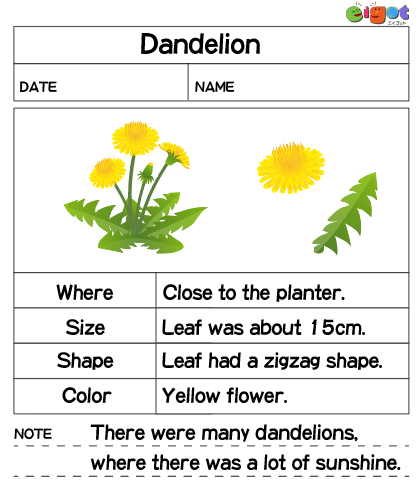How to summarize records
What does summarize mean?
To give a brief statement of the most important facts or ideas about something or someone using a few words.
Below is an example of summarizing records about a Dandelion.
Let's summarize it!

Title: Dandelion
Starting with a clear and descriptive title helps to identify the purpose of your journal. You can name your journal something like "Dandelion ".
Date: Record the Current Date
Make sure to write down the date of your observation. This helps you to track the changes in the dandelion over time.
Name: Don’t Forget Your Name!
Include your name at the top of the page, so everyone knows who the keen observer is!
Location: Where Did You Find the Dandelion?
Describe the place where you found the dandelion. Was it in your school’s garden, a park, or your backyard? Being specific helps you remember the environment it grows in.
Size: How Big is the Dandelion?
Use a ruler to measure the dandelion and record its size. Whether it’s 10 centimeters tall or any other measurement, noting this down will help you see how much it grows over time.
Shape: What Does the Dandelion Look Like?
Take a close look at the dandelion’s shape. Are the leaves long and narrow, or short and wide? Does the flower have a perfect round shape? Describe what you see in your journal.
Color: Observe the Colors
Dandelions are usually known for their bright yellow flowers and green leaves, but make sure to record the exact shades you see. Are the yellows deep or pale? Are the greens dark or light? Writing down these details will enrich your observation journal.
Note: Additional Observation Points
Write down any special things you noticed or questions that you had in the "Notes" section.

